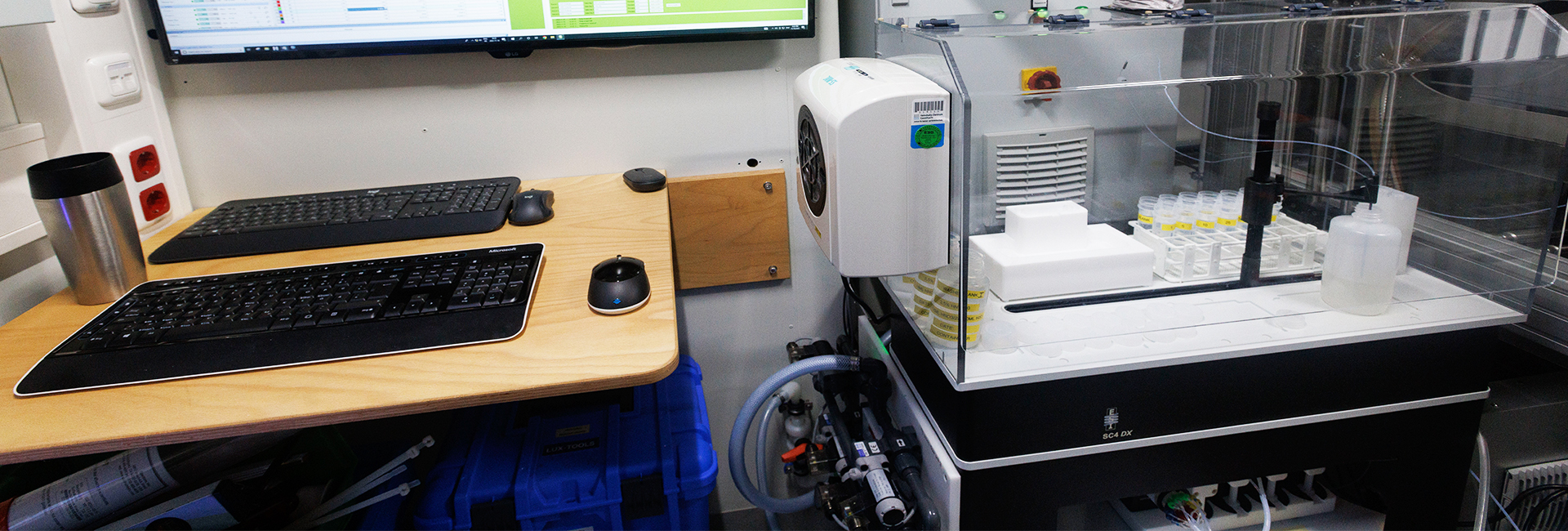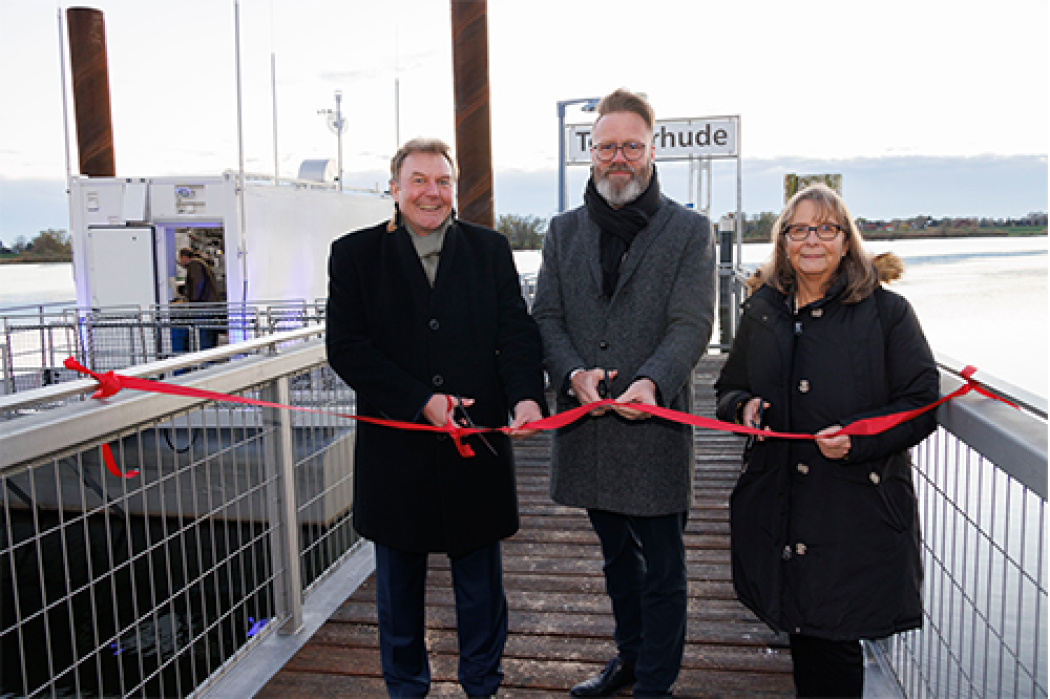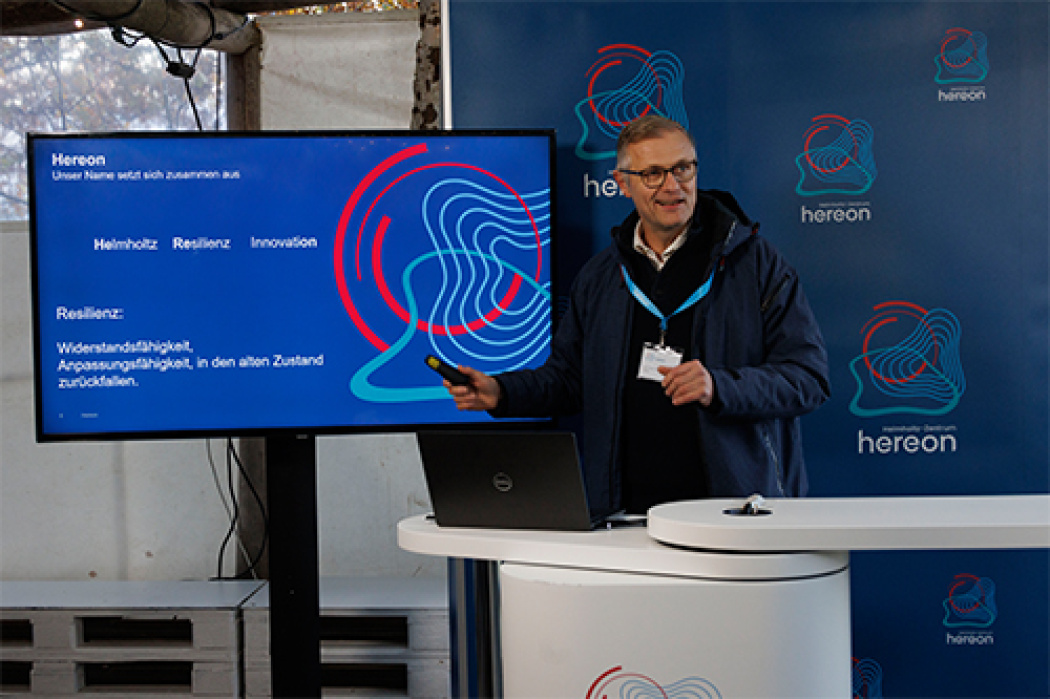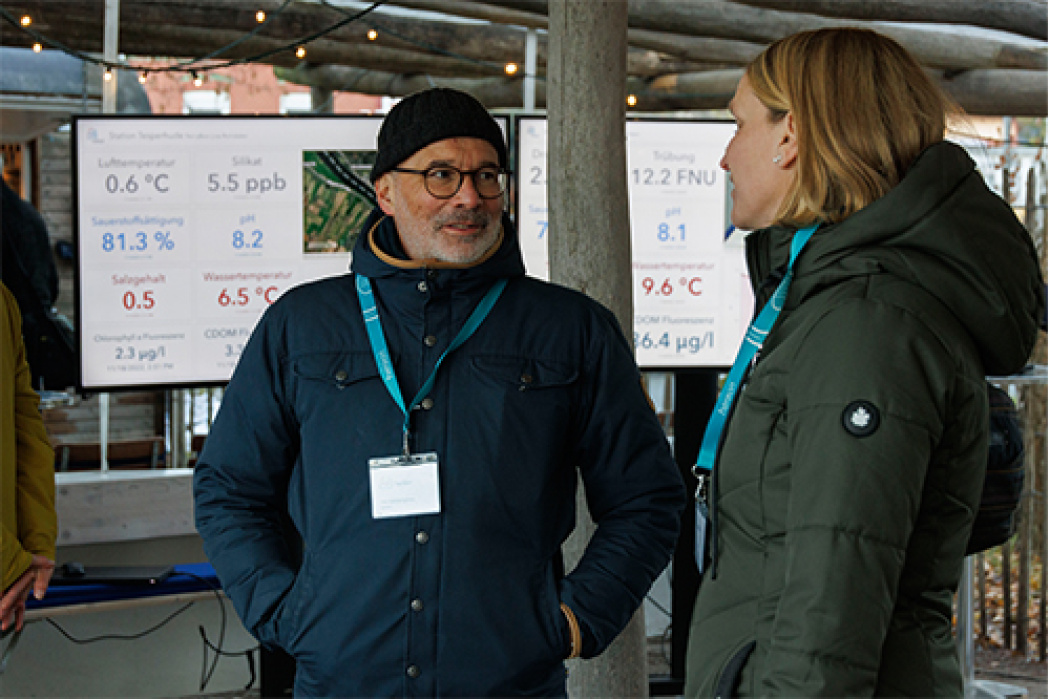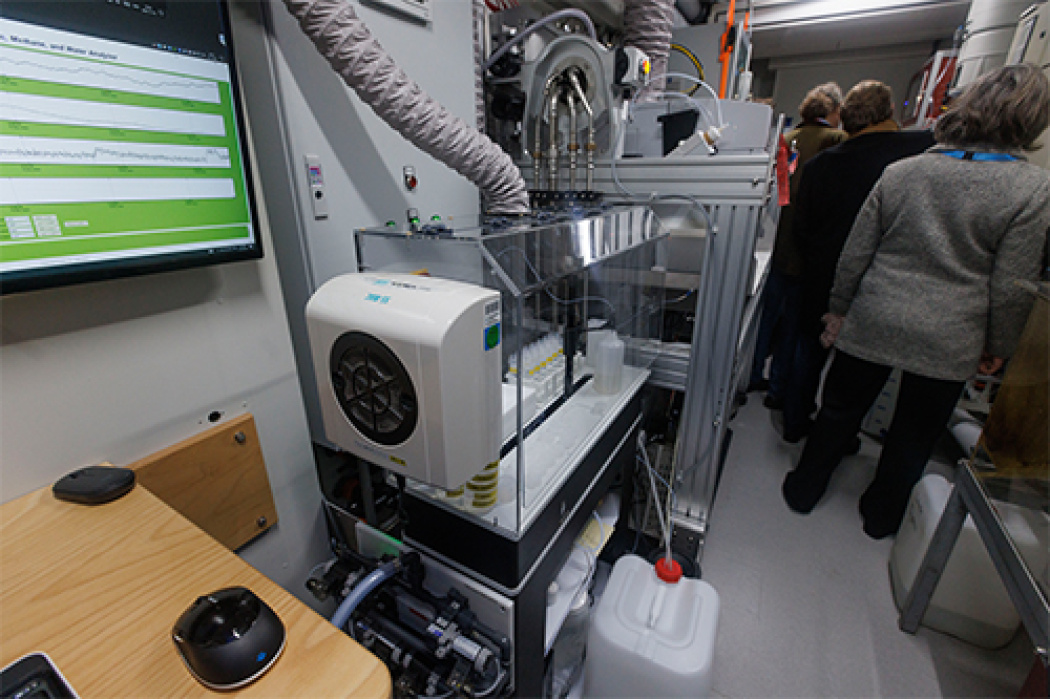The sea begins in Geesthacht
+++ Joint press release with the Ministry of Economics of Schleswig-Holstein +++
The Helmholtz-Zentrum Hereon inaugurated its new floating research platform in Geesthacht. Claus Ruhe Madsen, Minister of Economics of Schleswig-Holstein, was also invited. Stationed in Tesperhude, the platform continuously supplies scientists with high-resolution, real-time data on the water of the Elbe River from its newly designed container lab. The analyzed substances enter the Tidal Elbe via the Geesthacht weir and are thus also relevant for the Port of Hamburg and the entire waterway to the North Sea.
Strolling along the Elbe, watching seagulls sailing in the wind, or drinking a coffee on the beach path and looking out over the water - Tesperhude is a place to linger. But now this Geesthacht spot is also a fixed point for researchers at the Helmholtz-Zentrum Hereon. The inauguration marks the start of full operation of the research platform, which permanently measures data in the water, such as discharge and currents, nutrients, suspended matter, microalgae, greenhouse gases and selected pollutants.
Relevance for the entire region

The research platform will increase knowledge about the Elbe. Photo: Hereon/ Patrick Kalb-Rottmann
The Tidal region of the Elbe between Geesthacht and the North Sea is a living and economic space, a transport route to the Port of Hamburg and a popular tourist region. However, this river-sea system is subject to constant change and is strongly influenced by human activities and the effects of climate change. Significant changes include, for example, the amount and composition of suspended sediments that affect the measurement of navigable depth or that can lead to oxygen deficiency and in consequence fish kills. Particularly in the middle region of the Elbe, a mass growth of microalgae is often visible. They then die in the tidal Elbe and their remains are degraded by bacteria, consuming a lot of oxygen. In order to predict these and other changes and to be able to react at an early stage, the researchers want to better understand these systems.
Monitored and evaluated by the scientists, a differentiated picture of the Elbe and also its sediment as one of Germany's most important waterways can be drawn - and how it is shaped either by nature or man-made. In addition to its use for transportation, the Elbe is also the guarantor of water availability for municipalities and resident companies.
The minister is in the process

Minister Claus Ruhe Madsen inaugurated the research platform. Photo: Hereon/ Marc Schultz-Coulon
Claus Ruhe Madsen, Schleswig-Holstein's Minister of Economic Affairs, said at the inauguration: "With the Tesperhude research platform, we can better understand the Elbe and react more quickly to changes such as extreme weather events. This is not only good for science and the Geesthacht site, but forward-looking for the entire region in the south of Schleswig-Holstein."
For Hereon researchers, the opening is a long-awaited moment. "The platform is technically sophisticated and can now do even more than what we had envisaged in the initial planning phase. It is a further development of our research and will provide important information about the transport of substances - such as nutrients and pollutants - in the Elbe," says Volker Dzaak, head of the Logistics and Organization department at Coastal Research, who played a leading role in the construction of the platform from Hereon's side.
Backround
The collected data are of interest, among other things, in order to be able to plan and act with foresight. The data is stored in the "Helmholtz Coastal Data Center" (HCDC) and is quickly available, which is particularly important during extreme events such as high or low water. Interested parties from science and industry can use both the data and the research platform itself, for example. The platform will be used to test or further develop new methods for water research and other technologies.
The construction of the research platform, costing 1.5 million euros, is being funded by the European Regional Development Fund, the state of Schleswig-Holstein, the Helmholtz Association of German Research Centers and the Helmholtz-Zentrum Hereon. The executing shipyard for the floating pontoon was the Hitzler shipyard in Lauenburg, where the Hereon's new research vessel, the LUDWIG PRANDTL II, is also currently being built.
Notice
On 16.12.22, the future name of the new research ship was found in an internal competition among Hereon staff. The ship will be called "Coriolis". The chosen name goes back to the mathematician and physicist Gaspard Gustave de Coriolis (1792-1843) and thus replaces the working title "Ludwig Prandlt II", which had been used until then.
Further Information
Contact
Helmholtz-Zentrum Hereon
Communication and Media
Helmholtz-Zentrum Hereon
